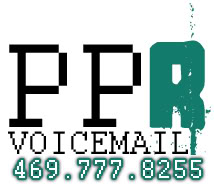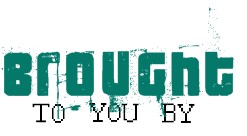QCF: Promise Mascot Agency

 he Yakuza/Like a Dragon titles are a series of video games that quickly etched their mark onto my heart, especially after I started to lose hope of whether or not the next Shenmue entry would ever happen. In spite of the action-laced criminal drama that the series is famous for, though, the B-Story styled side-quests and activities were what always hooked me for hours on end, more often to the extent that the main objectives of the games were ironically set to the side. While Ryu Ga Gotoku Studio made sure to pack plenty of flashy distractions and gripping stories, there was a certain recurring trend among the low-stakes pastimes that were included in each Yakuza title—a business-simulator-like mini-game. These side-operations didn’t just have some flimsy premise to justify their inclusion, either; these games are often sizable productions, complete with their own wacky gravitas of the “Saving the Orphanage” variety attached to the ordeal, and in some instances were just as deep as the main plot.
he Yakuza/Like a Dragon titles are a series of video games that quickly etched their mark onto my heart, especially after I started to lose hope of whether or not the next Shenmue entry would ever happen. In spite of the action-laced criminal drama that the series is famous for, though, the B-Story styled side-quests and activities were what always hooked me for hours on end, more often to the extent that the main objectives of the games were ironically set to the side. While Ryu Ga Gotoku Studio made sure to pack plenty of flashy distractions and gripping stories, there was a certain recurring trend among the low-stakes pastimes that were included in each Yakuza title—a business-simulator-like mini-game. These side-operations didn’t just have some flimsy premise to justify their inclusion, either; these games are often sizable productions, complete with their own wacky gravitas of the “Saving the Orphanage” variety attached to the ordeal, and in some instances were just as deep as the main plot.
Thinking back, I remember spending a whole night grinding away at Ichiban Confections, and just easily lost count over how many times that I had thought to myself, “Man, this should be a whole-ass game with a full-time 40-hour campaign and everything…”
Well, it would seem that Kaizen Game Works must have heard my silly pipe dreams and did just that with Promise Mascot Agency, and even enlisted the incredible talents of Takaya Kuroda for good measure.
Beyond the parallels to the Dragon of Dojima’s outings, Promise Mascot Agency offers an engrossing story of perseverance and redemption through a massive melting pot of gameplay mechanics that have no business working together as well as they do. The end result is a fresh and weirdly addictive venture that delivers an experience that’s even better than the bizarrely solid sum of its parts.

From here on out, I’m going to do everything I can to avoid comparisons between Promise Mascot Agency and the Like a Dragon series of games. Aside from the fact that constantly comparing a game with another can be a bit gauche, I really want to drive the point home that while there are a lot of similarities or outright homages to Toshihiro Nagoshi’s iconic brawler, there’s a lot that Promise Mascot Agency succeeds at doing in its own right, and in some instances, even better.
So with this attempt, I’ll hopefully make my last direct comparison into the exordium of this thing: Promise Mascot Agency liberally borrows a surprisingly large number of story beats from Yakuza/Like a Dragon. On that same token, however, the narrative of Promise Mascot Agency comprises these beats in a manner that’s simply reverent at its worst, and arguably better paced than the material it muses from at its best. As players boot to the start screen, the game will initially ask them to “Press any button to begin your redemption,” setting an anxious vibe upon the opening scenes where we’re introduced to the premise of humans and mascots living together through a shaky coexistence. Shortly after the preamble, the main character of the title, Michizane Sugawara, or Michi for short. The imposing figure bears multiple battle scars across his face, and a stoic posture in his stance that’s quickly deflated by the goofy-ass broom he wields  upon his shoulder as if it were a full-blown Tetsubō. Accompanying him is the boss of the family, Matriarch Shimazu, Mizu’s oath brother-in-arms and protégé, Kenta Tokihira, and the veteran muscle of the crew, along with being the first proper mascot introduced to the player, Don☆Kii, who resembles a severed pinky finger that’s ‘roided the heck out.
upon his shoulder as if it were a full-blown Tetsubō. Accompanying him is the boss of the family, Matriarch Shimazu, Mizu’s oath brother-in-arms and protégé, Kenta Tokihira, and the veteran muscle of the crew, along with being the first proper mascot introduced to the player, Don☆Kii, who resembles a severed pinky finger that’s ‘roided the heck out.
The trio is on their way to broker the remaining details for a pick-up job that will solidify their fealty to the Hara Federation, a larger coalition of yakuza that has opened their books up to a partnership with the Nakamura Alliance under the stipulation of a 12 billion yen buy in. During this exchange, leadership from both factions agrees upon Michi and Toki being the ones to handle the pickup and drop off of the money to solidify the deal, and it’s here where we learn of his reputation as the top lieutenant, as the designated cleaner for the Shimazu family. Mizu’s work at tying up the crew’s bloody loose ends is so revered that he’s even earned the moniker of “The Janitor.” After the task is assigned, Mizu and Toki await the dropoff at the spot and steadily share their thoughts on that matter with a tension that’s subtly laced with “Cain and Abel” vibes, and wouldn’t you guess—shit goes south not long after. The duo is ambushed by a rival faction, the Fujiwara syndicate, and in the scuffle, one unexpected turn leads to the goons swindling the precious 12 billion yen from Mizu in exchange for Toki’s life, and then quickly dipping out with the cash in tow. Mizu heads back to accept responsibility for his failure and slices off his Digitus Minimus as penance, but it’s sadly just not enough, as now the Hara Federation is out for blood.

 Matriarch Shimuzu calls for a Hail Mary and fakes Mizu’s death, exiling him to a distant island with the task of earning back the owed 12 billion yen to reimburse the promised tribute payment while she stalls for time. Mizu isn’t just sent away to any ordinary island; however, he’s whisked off to the dangerous prefecture of Kaso-Machi, a land that curses all yakuza men who enter it with a slow and painful death. What’s a loyal soldier to do?—what any team player would do; Mizu connects with his assigned contact, an eccentric mascot who’s also a severed little finger thing, Pinky☆, and they set out to turn an abandoned love hotel into the Promise Mascot Agency.
Matriarch Shimuzu calls for a Hail Mary and fakes Mizu’s death, exiling him to a distant island with the task of earning back the owed 12 billion yen to reimburse the promised tribute payment while she stalls for time. Mizu isn’t just sent away to any ordinary island; however, he’s whisked off to the dangerous prefecture of Kaso-Machi, a land that curses all yakuza men who enter it with a slow and painful death. What’s a loyal soldier to do?—what any team player would do; Mizu connects with his assigned contact, an eccentric mascot who’s also a severed little finger thing, Pinky☆, and they set out to turn an abandoned love hotel into the Promise Mascot Agency.
Despite the absurdist elements of the story, Promise Mascot Agency’s narrative does an incredible job of suspending the sensation of the uncanny valley with a Muppet-like conviction to its conceit. The constant theme of the game is redemption, and through their shared trauma bond, Mizu and Pinky☆ pledge to start over and reach new heights, while overcoming the failures of their past.
It’s here where adventure really begins as the Visual Novel experience smash cuts to an open-world adventure, and admittedly, the juxtaposition is certainly a bit of an adjustment to get used to in the early goings.
To start, despite its premise, Promise Mascot Agency doesn’t have any actual combat elements in it. Players will be relegated to three types of play: expansive open-world exploration, Visual Novel-esque interactions, and Mini-game-ass Mini-Games. The open-world exploration takes place in the cockpit of Michi’s beater of a Kei truck, where he’ll drive around the island town recruiting misfit mascots for his upstart agency and promote the business to the townsfolk who’re weary of Pinky☆’s antics. Anytime players interact with a character or landmark on the overworld map, it will then shift the screen over to the visual novel mode of the title, where characters will espouse their given dialogues to the matters at hand, and in some instances, make choices through dialogue trees that may or may not affect elements of the campaign. I won’t sugarcoat it—the open-world aspect of the game is easily the most inconsistent part of the experience. Not to say it’s awful by any stretch, but it’s definitely the clunkiest mechanic in Promise Mascot Agency, especially in contrast to the diamond-quality polish in every other aspect of the game. The only way Michi and Pinky☆ get around Kaso-Machi is by driving his old Kei Truck, with Pinky☆ coaching her giant little finger of a body in the truck bed for the ride. As you drive, players will encounter residents, potential mascot recruits, or little side distractions to improve the island community, like cleaning up shrines or picking up caches of trash littered all over the town.

As neat as this all may sound, there’s no bones about it—the driving mechanics are just plain rough. The Kei truck can accelerate and reverse, but it can’t brake—you can only hard shift into reverse to skid yourself to an awkward stop before the truck will start backing up. After spending 40-plus hours in the game and earning all of the gold ranks in the optional time trial races on the island, I still couldn’t tell if the stupid thing could even drift either. Through story progression, players will eventually be able to unlock mobility upgrades that will open up the island to more exploration. The upgrades and their respective enhancements can come in the form of nitrous boosting for more speed, spring-loaded jumps that will launch the truck into the air, or even the ability to transform the truck for dynamic off-road travel like a boat to navigate the various bodies of water or a janky-ass sailplane that can take off into the air. As neat as these tune-ups may sound, though, they also introduce their own layer of clunk to the deal. The boost is handy, but the lack of handling  can make it an unreliable feature to traverse the island, especially when exploring tight corners. The boat is neat, but its top speed is frustratingly slow in comparison to land, in that seafaring can subtly feel like a slog shortly after driving into a drink. Now flying is rad as hell, and also, the fastest wait to travel; however, there are so many conditions involved that it has a bit of an annoying learning curve that somewhat hampers the enjoyment. Take-off, for example, can only happen after players quickly switch into flight mode at the peak of a tuck jump in mid-air, or if they activate it after driving off the edge of a tall height and trigger the flight mode during their descent. From there, steering and ascending have surprisingly tedious nuances to them as the controls resemble those of a real plane with inverted directions and a sensitive yoke that treats piloting like its friggin’ Microsoft Flight Simulator. Instead of a simpler steering system, turning to the left or right will actually bank your truck-plane hybrid and can quickly jettison you in a spiraling tail-spin if you don’t properly compensate for the ascension or dissension on the yoke—the sense of detail is obnoxious, but also admittedly neat at the same time. Overall, I still had fun touring the island from my silly little jalopy of a truck, but I’d be lying if I said that certain objectives had me fuming, like a certain trash bag on a faraway archipelago that comes to mind…
can make it an unreliable feature to traverse the island, especially when exploring tight corners. The boat is neat, but its top speed is frustratingly slow in comparison to land, in that seafaring can subtly feel like a slog shortly after driving into a drink. Now flying is rad as hell, and also, the fastest wait to travel; however, there are so many conditions involved that it has a bit of an annoying learning curve that somewhat hampers the enjoyment. Take-off, for example, can only happen after players quickly switch into flight mode at the peak of a tuck jump in mid-air, or if they activate it after driving off the edge of a tall height and trigger the flight mode during their descent. From there, steering and ascending have surprisingly tedious nuances to them as the controls resemble those of a real plane with inverted directions and a sensitive yoke that treats piloting like its friggin’ Microsoft Flight Simulator. Instead of a simpler steering system, turning to the left or right will actually bank your truck-plane hybrid and can quickly jettison you in a spiraling tail-spin if you don’t properly compensate for the ascension or dissension on the yoke—the sense of detail is obnoxious, but also admittedly neat at the same time. Overall, I still had fun touring the island from my silly little jalopy of a truck, but I’d be lying if I said that certain objectives had me fuming, like a certain trash bag on a faraway archipelago that comes to mind…
Finally, the mini-game aspect of the game, where the majority of the action outside of the open-world traversal is, is also the crux of growing the capital and resources for your new mascot business in the game.
As players travel the various regions of Kaso-Machi, the locales may appear a bit empty at first, but as the disgraced yakuza and creepy mascot pair gradually meet with all of the influential island residents and its shady mayor to announce their new business venture, the island will start to bustle with options to chase down. After getting your business license, players will have access to pursue missions and collectibles, most of which include the titular vagrant mascots who’re down on their luck and looking for a new start themselves. Each new recruit you hire can be assigned to jobs, looking for the colorful promotion that only a mascot can offer. Enlisting them for these various gigs will not only earn you some quick cash, but if the giant caricatures perform well , it’ll net some positive word-of-mouth for your reputation, which in turn will attract other potential commissions from neighboring businesses that would love to get a mascot to advertise for them, and more objectives to track down. In the early hours of the gameplay loop, I had enlisted a giant anthropomorphic block of tofu with an anxiety disorder, a Japanese tombstone-shaped girl that’s eerily passionate about the history of graveyards, and a sticky yam-covered cat who was obsessed with porn—I was hooked.
 Y'all thought I was kidding about the gooner cat...
Y'all thought I was kidding about the gooner cat...
 Just like Michi and Pinky☆, each prospective mascot you approach to join you will have their own dilemmas, and need to be convinced that your agency can promise them a better tomorrow. In a true “Art imitates Life” fashion, Mascots will come to the negotiation for their services with certain demands based on their previous experiences, and players will need to determine the most appealing worker perk to offer their potential recruit without breaking the bank. These perks include guaranteed time-off to curb burnout, monthly bonuses, and the frequency of job reviews to determine raises for their pay rates. Once the terms for their employment are set, mascots will come aboard with two more stats that only pertain to their work/life balance: the Happiness Stat and the Stamina Stat. These stats come into play with how you manage your mascots—if you send them out too many times or cheap out on the extra pay for their performance, their Happiness and Stamina will naturally deplete faster than normal. If these figures hit rock bottom, the mascots will likely take their suitcase and bowler hat and dip out. So that they don’t crash out, it’s important to grow these metrics whenever resources allow you the opportunity. If managed well, mascots will reach certain milestones in their development called “Life-Satisfaction” that will offer an exclusive side-quest that revolves around whatever personal resolution or reckoning that mascot may have with themselves and their relationship with Promise Mascot Agency. Leveling this stat up will net even more pay from jobs and an increase to their popularity, advancing the chances of attracting more fans that could help the Agency’s reputation grow towards more job prospects. Managing a Mascot is just one appetizer to the full-course meal that is the business simulation, but Managing which Mascot to do what job is the thick sirloin at the center of the plate, and it’s the zest that keeps on giving.
Just like Michi and Pinky☆, each prospective mascot you approach to join you will have their own dilemmas, and need to be convinced that your agency can promise them a better tomorrow. In a true “Art imitates Life” fashion, Mascots will come to the negotiation for their services with certain demands based on their previous experiences, and players will need to determine the most appealing worker perk to offer their potential recruit without breaking the bank. These perks include guaranteed time-off to curb burnout, monthly bonuses, and the frequency of job reviews to determine raises for their pay rates. Once the terms for their employment are set, mascots will come aboard with two more stats that only pertain to their work/life balance: the Happiness Stat and the Stamina Stat. These stats come into play with how you manage your mascots—if you send them out too many times or cheap out on the extra pay for their performance, their Happiness and Stamina will naturally deplete faster than normal. If these figures hit rock bottom, the mascots will likely take their suitcase and bowler hat and dip out. So that they don’t crash out, it’s important to grow these metrics whenever resources allow you the opportunity. If managed well, mascots will reach certain milestones in their development called “Life-Satisfaction” that will offer an exclusive side-quest that revolves around whatever personal resolution or reckoning that mascot may have with themselves and their relationship with Promise Mascot Agency. Leveling this stat up will net even more pay from jobs and an increase to their popularity, advancing the chances of attracting more fans that could help the Agency’s reputation grow towards more job prospects. Managing a Mascot is just one appetizer to the full-course meal that is the business simulation, but Managing which Mascot to do what job is the thick sirloin at the center of the plate, and it’s the zest that keeps on giving.
Like the real-life Japanese mascot s they’re modeled after, each character will have their own strengths, weaknesses, and preferences on the kind of work you can book them for. Every goofy figurehead on the roster is split into two different specialty types that are categorized under the combination of a “Food”, “Unusual”, “Historical”, “Cute”, “Safety”, “Funny”, “Love”, or “Scary” type. In addition to those specialty types, they are also measured in five different stats related to the Mascot work they undertake: Cog, Footsteps, Pawprint, Thought Bubble, and People. Each commission available to your bench of bobble-headed misfits will complement some specialty types more than others, such as a bookstore opening favoring a historical mascot, while a cemetery memorial may want an Unusual or Scary type mascot for their event. Oh shit, before I forget, did I mention that there’s an overworked office worker cat mascot named “Salary-Nyan” and that the Yen symbol (the name of Japan’s currency) is used to shape the conch of his cat ears?! I can’t stress enough just how much personality is BRIMMING from this quirky little game.

Anyways, as I was saying, the individual stats for a Mascot will not only play into the grade of payout and potential new fandom you can earn for your agency, it’ll also factor towards the wacky misfortunes that can plague your effervescent representatives during their hired appearances. These unfortunate incidents can range anywhere from a mascot being stuck in a doorframe, creepy online stalkers showing up to crash the event, or hell, even ghosts showing up to haunt the festivities. There’s over a dozen tragedies to befall your mascot, and each one will have a health bar with hit-points that factor into one of the aforementioned mascot stats. The tricky thing is, while a mascot’s innate stats will play into the odds of overcoming the problem for the sake of the job, they’ll only be able to get so far against with their initial damage against the mishap’s HP bar, and it’s here where we’re introduced to the other major element of mascot jobs—Mascot Support Heroes.

The gimmick to the Mascot Support Heroes is that they assist the situation in the form of collectible trading cards similar to that of a deckbuilding system, with each hero having their own rarity grades of their card that’ll have varying figures of the same mascot stats. Once the fight between your mascot and snafu begins, players will get a random draw from their deck of Support Heroes, and a starting pool of 3 action points to use their cards. Each card will have three action stats relating to the fight: one to account for how many action points they need for activation, the second one for how many action points they award back to the action pool, and finally, how many more new cards they can add to your hand from the deck of Support Heroes. If players use up all of their actions or cards without draining the hit points of the problem that’s terrorizing the mascot on duty, they’ll end up doing a lousy performance for their job results, and yield less money and fandom as a result. Continual failure can also permeate into that mascot’s work/life balance status, and in turn, screw up the standing your agency has with the industry. Booking your employed critters  to their client appointments in Promise Mascot Agency elegantly captures all of the tenants of operating a day-to-day business and the respective consequences that come with managing a company day-to-day, fostering a gameplay loop that gets more addicting the further you progress. The business aspect doesn’t even stop there—as the company grows in size, so too do the services you offer, like merchandising your mascots into ridiculous novelty products that you delegate the distribution of through a SEGA UFO-inspired crane game. Hell, you can even outsource subcontracts to mascots outside of Kaso-Machi, and have them represent Promise Mascot Agency in their territory to market the agency throughout other major metropolitan and rural areas in Japan, chasing that yen never gets old, especially when it’s a matter of life or death. See, in addition to setting aside the cost of overhead expenses to keep the lights on, Michi will need to start sending cash back home as soon as possible, as the Hara Federation will steadily grow more impatient with her stalling out the tribute payment. This means that on top of all of the accounting to pay your workers and run the agency, players will need to deposit funds to Shimazu’s account and tick her debt down—all of which is colorfully represented by a time gauge where the needle is a blade that will slice Matriarch's neck if money isn’t deposited by the zero hour.
to their client appointments in Promise Mascot Agency elegantly captures all of the tenants of operating a day-to-day business and the respective consequences that come with managing a company day-to-day, fostering a gameplay loop that gets more addicting the further you progress. The business aspect doesn’t even stop there—as the company grows in size, so too do the services you offer, like merchandising your mascots into ridiculous novelty products that you delegate the distribution of through a SEGA UFO-inspired crane game. Hell, you can even outsource subcontracts to mascots outside of Kaso-Machi, and have them represent Promise Mascot Agency in their territory to market the agency throughout other major metropolitan and rural areas in Japan, chasing that yen never gets old, especially when it’s a matter of life or death. See, in addition to setting aside the cost of overhead expenses to keep the lights on, Michi will need to start sending cash back home as soon as possible, as the Hara Federation will steadily grow more impatient with her stalling out the tribute payment. This means that on top of all of the accounting to pay your workers and run the agency, players will need to deposit funds to Shimazu’s account and tick her debt down—all of which is colorfully represented by a time gauge where the needle is a blade that will slice Matriarch's neck if money isn’t deposited by the zero hour.
Now, ALL this mind you is enough to already make for a great time, but the addictively solid gameplay loop isn’t what will keep you coming back to Promise Mascot Agency for more—it’s friggin’ writing.
I can’t tell you how much this story of redemption made me laugh and cry, like, certain moments from this game will live rent-free in my head for YEARS to come.
A lot of that is attributed to incredible chemistry between Michi and Pinky☆, because with every moment the former hitman attempts to compose himself as this straight-laced man of humility and principle, this cartoon-ass tsunami of a personality comes storming through as the perfect foil with an irreverent or zany take on the matter, mostly as a rib to the former. The writing especially shines from the incredible voice acting that delivers the constant witticisms with conviction that goes down like a sweet glass of chardonnay. Takaya Kuroda has definitely proven himself capable of portraying a charismatic gangster who’s endeavoring towards a better life, but I can’t stress just how amazing Ayano Shibuya is at bringing the character Pinky☆ to life, with a chaotic fourth-wall-breaking energy that makes her the perfect fit to fill the ironic role of being the mascot for a game about mascots. Aside from being the comedic relief, though, her character's motivations towards rebuilding the world from the fallout of the previous generations of greedy men who let her generation down are refreshingly resonant, given the current state of things, and really hammer the virtues of activism in a way that’s simply poignant in what is again, a story about redemption.
 Be prepared for moments filled with RAW emotion like this one.
Be prepared for moments filled with RAW emotion like this one.
2025 has made it really tough to choose a favorite game of the year, but rest assured, Promise Mascot Agency is at the top of that running, and I’m confident that if you gave it a shot, it would very likely be at the top of your running too. At the start of this review, I mused about how I wished for a game that revolved around the silly side-business life with the gravitas of something bigger behind it, and boy howdy, y’all I can’t STRESS just how much Kaizen Game Works delivered that, and so much more!
Make room for it in your precious game-playing schedule if you haven’t already—I can assure you it’ll be worth it.





 GeorgieBoysAXE
GeorgieBoysAXE




